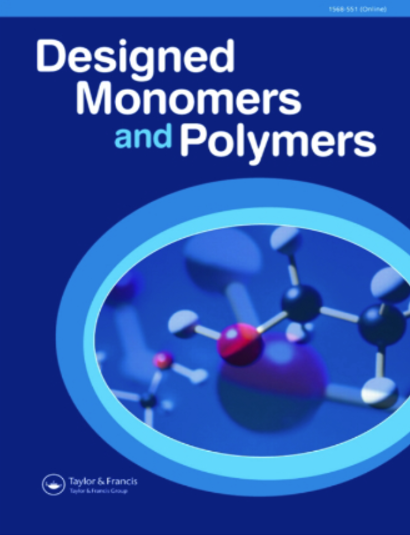壳聚糖控释纳米颗粒的合成与评价
IF 2.3
4区 化学
Q3 POLYMER SCIENCE
引用次数: 10
摘要
替格瑞洛(Ticagrelor, TG)是一种生物利用度较低的BCS IV类药物,其口服生物利用度约为36%,本研究旨在制备一种控释黏附纳米颗粒制剂,以提高其口服生物利用度。由于具有高表面积,纳米颗粒可以作为疏水药物的有效载体,因此由于其亲水性可以提高其水溶性。以壳聚糖(CH)为聚合物,三聚磷酸钠(TPP)为交联剂,采用不同浓度聚合物对TG和TPP进行离子胶凝法制备了TG纳米颗粒。通过zeta粒度仪、表面形貌和化学相容性分析,对制备的纳米颗粒进行表征,评估zeta电位、尺寸、形状、包埋效率(EE)和负载能力(LC)。用紫外分光光度计观察药物释放情况。通过增加CH的浓度,得到了理想的粒径(106.9 nm)、zeta电位(22.6 mv)和多分散性指数(0.364)。体外分析显示,TG在低pH-1.2和中性pH-7.4培养基中均有控制和延长释放,并在模拟胃条件下有效保护被捕获的TG。x射线衍射图(XRD)显示了形成的NPs的结晶性质。因此,这项工作表明,疏水药物可以有效地封装在纳米颗粒系统中,以提高其溶解度和稳定性,最终提高其生物利用度和有效性,并通过减少给药频率提高患者的依从性。本文章由计算机程序翻译,如有差异,请以英文原文为准。
Synthesis and evaluation of chitosan based controlled release nanoparticles for the delivery of ticagrelor
ABSTRACT The aim of this contemporary work was to formulate a controlled release mucoadhesive nanoparticle formulation for enhancing the oral bioavailability of Ticagrelor (TG), a BCS class IV drug, having low oral bioavailability of about 36%. The nanoparticles can act as efficient carriers for hydrophobic drugs, due to having high surface area and hence can improve their aqueous solubility due to their hydrophilic nature. The nanoparticles (NPs) of TG were formulated using chitosan (CH) as polymer and sodium tripolyphosphate (TPP) as cross-linker, by ionic gelation technique with varying concentrations of polymer with respect to TG and TPP. Characterization of prepared nanoparticles was carried out to assess zeta potential, size, shape, entrapment efficiency (EE) and loading capacity (LC), using zeta sizer, surface morphology and chemical compatibility analysis. Drug release was observed using UV-Spectrophotometer. By increasing concentration of CH the desired size of particles (106.9 nm), zeta potential (22.6 mv) and poly dispersity index (0.364) was achieved. In vitro profiles showed a controlled and prolonged release of TG in both lower pH-1.2 and neutral pH-7.4 mediums, with effective protection of entrapped TG in simulated gastric conditions. X-ray diffraction patterns (XRD) showed the crystalline nature of formed NPs. Hence, this effort showed that hydrophobic drugs can be effectively encapsulated in nanoparticulate systems to enhance their solubility and stability, ultimately improving their bioavailability and effectiveness with better patient compliance by reducing dosing frequencies as well.
求助全文
通过发布文献求助,成功后即可免费获取论文全文。
去求助
来源期刊

Designed Monomers and Polymers
化学-高分子科学
CiteScore
3.30
自引率
0.00%
发文量
28
审稿时长
2.1 months
期刊介绍:
Designed Monomers and Polymers ( DMP) publishes prompt peer-reviewed papers and short topical reviews on all areas of macromolecular design and applications. Emphasis is placed on the preparations of new monomers, including characterization and applications. Experiments should be presented in sufficient detail (including specific observations, precautionary notes, use of new materials, techniques, and their possible problems) that they could be reproduced by any researcher wishing to repeat the work.
The journal also includes macromolecular design of polymeric materials (such as polymeric biomaterials, biomedical polymers, etc.) with medical applications.
DMP provides an interface between organic and polymer chemistries and aims to bridge the gap between monomer synthesis and the design of new polymers. Submssions are invited in the areas including, but not limited to:
-macromolecular science, initiators, macroinitiators for macromolecular design
-kinetics, mechanism and modelling aspects of polymerization
-new methods of synthesis of known monomers
-new monomers (must show evidence for polymerization, e.g. polycondensation, sequential combination, oxidative coupling, radiation, plasma polymerization)
-functional prepolymers of various architectures such as hyperbranched polymers, telechelic polymers, macromonomers, or dendrimers
-new polymeric materials with biomedical applications
 求助内容:
求助内容: 应助结果提醒方式:
应助结果提醒方式:


